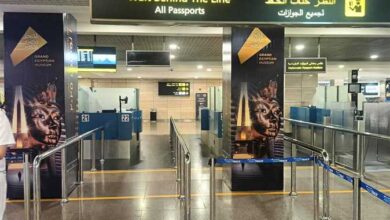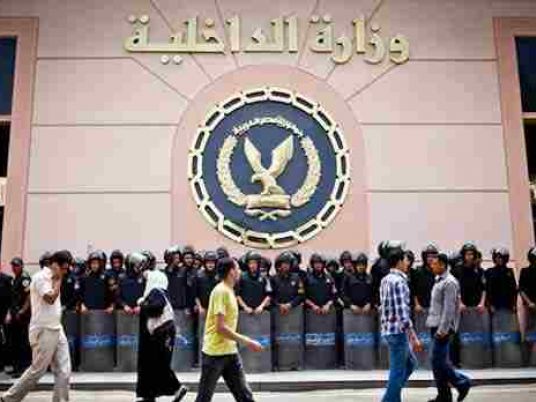Wadi-Amr, North Sinai—Last week saw abundant news reports on firefights between Bedouins and border police in Sinai. Details varied, but basics are consistent.
Just around dusk, in the vast desert of Wadi Amr some 50 kilometers south of Sinai’s border town of Rafah, Moussa al-Delh, a Tarabin tribesman, smokes a cigarette. A stack of books, including Nietzsche’s "Thus Spoke Zarathustra," sit beside him in his Land Cruiser, a large vehicle with tinted windows with which he navigates the desert like a shadow. In the media, he is referred to as a matloub amneyan (wanted by the security).
“It’s just a label that the regime has given us. They want to portray us as dangerous living devils in the desert,” he says, in a tone that mixes bitterness with mockery.
Three years ago, al-Delh worked as Bedouin community coordinator in the Sinai Cement Company, one of the few industrial operations in Sinai’s interior. Because the company was the site of Bedouins protests and threats of vandalism during clashes with security, al-Delh's position was vital.
But when al-Delh pushed for increased Bedouin employment at the company, its director allegedly fired him. While there is no regulation preventing Bedouins from working in public and private institutions, there is a reported preference to hire labor from Upper and Lower Egypt. Only 13 percent of North Sinai's population is officially employed in the private and the public sector, according to the 2010 governorate report.
Six months ago, the police launched a campaign to arrest al-Delh on allegations of harming the company’s interests and mobilizing Bedouin protests.
Some reacted by defending the rights of marginalized Bedouins, especially those unlawfully detained or wanted by security.
From regular commodities to drugs, arms, and human beings, smuggling is common in the 60,000 square km border peninsula. And tribal feuds, arms fights, and acts of terror have become prevalent in media coverage of Sinai.The rampant crime is a product of unemployment, under-development, and a basic lack of resources, and the geography encourages smuggling. Contentious relations between police and Bedouin communities exacerbate the situation.
Human development indicators rank North Sinai among the poorest governorates in Egypt. Home to about 372,000 people, the area suffers from severe infrastructural impediments, particularly with regards to water distribution.
After the string of terrorist attacks in the area from 2004 through 2006, no less than 3,000 Bedouins were arrested and detained, according to estimates by Human Rights Watch. Trials were not scheduled for most detainees. Several protests broke out, with minimal police intervention to solve the problem.
Salem Abu Lafi, another Sinai fugitive, escaped a prison sentence in 2008. He was jailed after Bedouin tribesman briefly held dozens of police officers in response to the killing of three Bedouins during a November 2008 protest. Abu Lafi said he found the bodies of the Bedouins in a dumpster.
Prior to his arrest, Abu Lafi worked as a mediator between police and the community. When he was asked by police to solve a community problem after the kidnapping incident, he was trapped and detained. “I was taken by treachery, and I had to leave by treachery,” he told Al-Masry Al-Youm from his stronghold in Wadi-Amr.
In February 2010, as he and other tribesmen were being transferred from one prison to another, Abu Lafi borrowed a policeman's cell phone to call his family. He told them he was joining them for lunch, and that they should, "Get ready." Abu Lafi escaped police and joined fellow tribesmen who were at home preparing their weapons. Police tried frantically to recapture him. In the ensuing battle, which took place on Bedouin land, a policeman was killed.
Al-Delh and Abu Lafi now openly speak about the failure of the Ministry of Interior to deal with the Bedouins and the security of the peninsula. According to al-Delh, the police do not understand the important differences between tribal Bedouins and Cairenes. This lack of understanding can be traced back to Israel’s departure of the area. “When civilian rule was introduced, Egypt distributed the peninsula into meaningless administrative units that don’t account for the tribal divisions of the area,” al-Delh said.
But ruling National Democratic Party Member of Parliament for the Sheikh Zouwayed and Rafah border areas, Fayez Abu Harb, say the confrontations are a no win solution. “The Bedouins need to know that they end up paying the price for such escalations,” he told Al-Masry Al-Youm. “All the problems here pertain to development, and this is what we’re working on. But in order to claim this development, we need to perform our duties as citizens. Protecting the stability of Sinai is one of those duties.”
Contested armament
The issue of Bedouins armament is ongoing. For security, it is the marker of potential terrorist activities, but for Abu Lafi and others, owning weapons is a response to the region's under-development. “There is no security in the area. The closest security point is 60 kilometers away. We need our arms,” Abu Lafi said.
As witnessed by Al-Masry Al-Youm, those large stores of arms include RPGs and M16s. According to tribesmen, weapons accumulation peaked in 2008 when smuggling to Gaza, under the militant Hamas rule, slowed as the strip saturated with arms.
Most of the arms were smuggled from Sudan, Jordan, and Israel, according to tribesmen.
Abu Lafi recalled 2005's moment of vacuous camaraderie between tribesmen and security, when some Bedouins were convinced to turn over their weapons. “The police took a picture of every Bedouin submitting his weapon. The following day, they’d fetch him and detain him,” Abu Lafi said.
“We tried to walk with them to the furthest mile. But they betrayed us.”
Both Abu Lafi and al-Delh protest the media suggestion that the Bedouin's weapons came from the 1967 war when Egyptian soldiers, defeated by the Israelis, exchanged their arms for a “sip of water” from tribesmen. “Soldiers had to make this story up, or else they would be put in military prisons for having left their arms behind. But the truth is that they let go of their heavy Kalashnikovs because they had to walk long miles,” al-Delh said.
The fact remains that much of the war’s arms are in Bedouin custody. “The amount of arms left from the 1967 war in the area cannot be underestimated,” said Retired Brigardier General Roushdy Ghanem, who served in Sinai. “I saw a lot of arms in our warehouses, but not as much as Bedouins’ arms.”
Security or intelligence?
Aside from an urgent need for infrastructural development, the Bedouins believe that the police need to be replaced with more politically aware management of the peninsula.
“The police are doing what they can do. But there needs to be dialogue,” Abu Harb said.
But for al-Delh, the problem is deeper. “The Bedouins of Sinai were under occupation until 1979. The mukhabarat (intelligence) were the only government party dealing with us,” he said. “This collaboration made them aware of the nature of the Bedouins, which is not the case of the police.”
According to al-Delh, a relationship between intelligence and the Bedouins still exists, with the former occasionally mediating the release of Bedouins from police custody.
“This is a border area, which means that its protection is a question of national security,” said Ghanem. “Only the military intelligence can handle this.”
A Bedouin arms smuggler, who spoke on the condition of anonymity, told Al-Masry Al-Youm the Bedouins have proved themselves a formidable adversary. “The police usually think twice before embarking on an armed campaign against us. When a soldier dies, his parents get a LE500 allowance for his coffin. They think it’s not worth it, and leave the ground for the Bedouins.”
In June, in an act of defiance against the police, Abu Lafi and other fugitives threatened to sabotage the gas pipeline that has been supplying Israel since 2008.
At the same time, Bedouin gunmen attacked the commercial border crossing of al-Ouja to protest security crackdown and the alleged arrest of Bedouin women to coerce fugitives to return. “Al-Ouja wasn’t an organized movement. It was a haphazard move, a normal reaction to security actions. But if we want to make an organized move, we can do it. We have arms that can destroy all of the police’s armored vehicles,” al-Delh said defiantly.
Abu Lafi took his RPG and fired a bullet in the air. A deep cracking sound echoed through the vast, empty space. “No one can control the desert,” he said.




